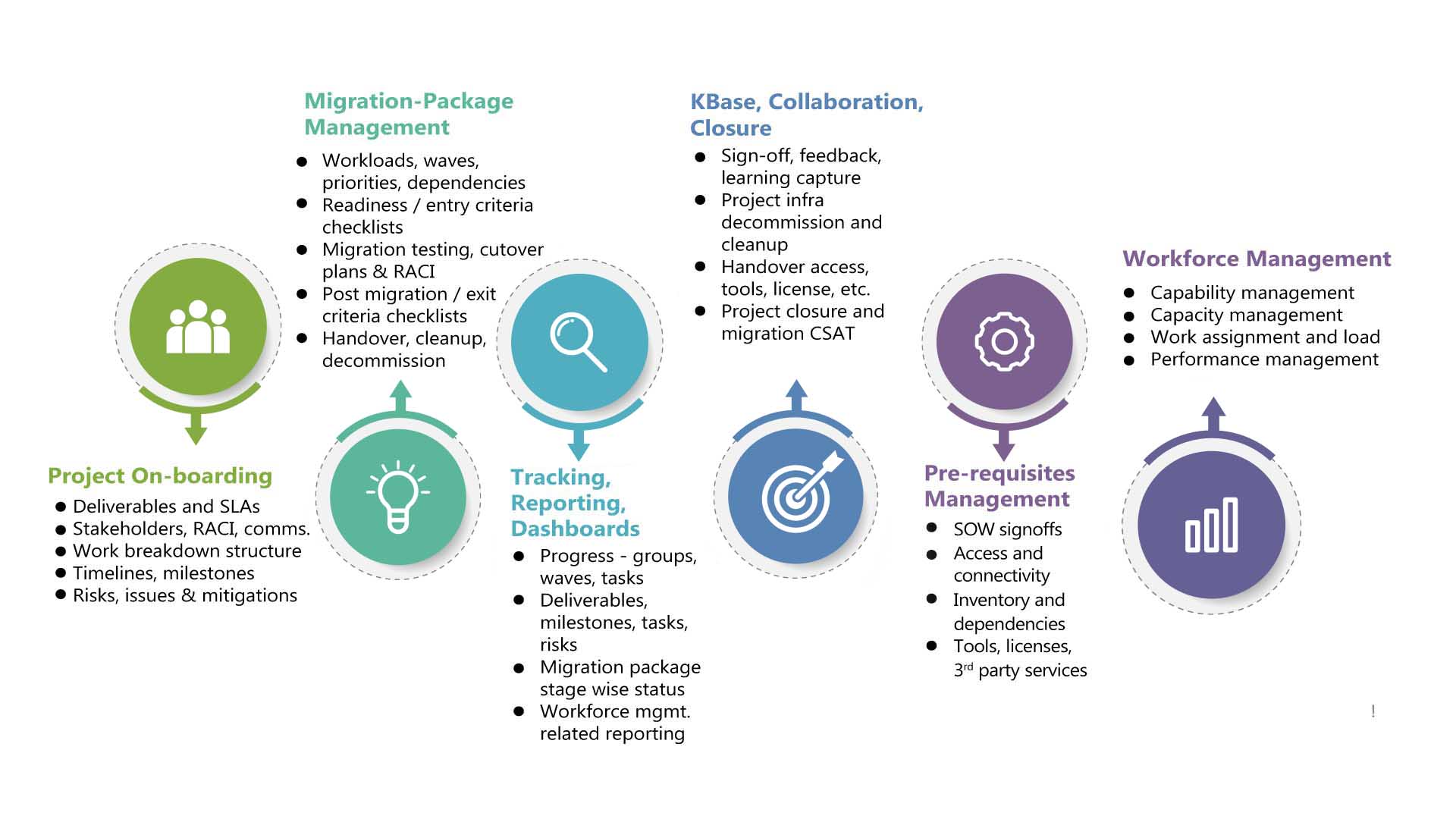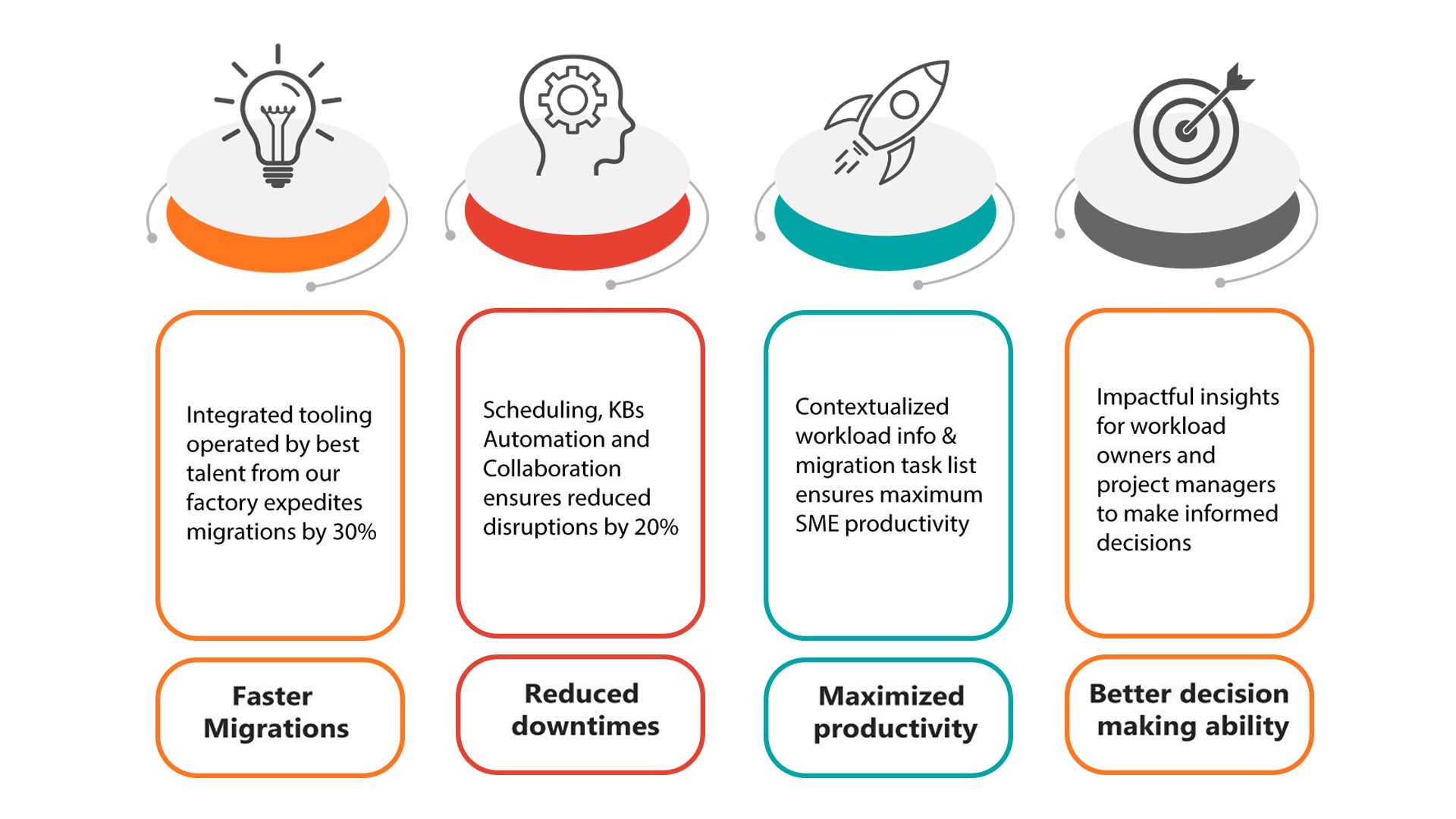Smooth Sailing: Key Priorities for Seamless Migration to Modern Data Centers and the Cloud

Modernizing your data center or migrating to the cloud represents a technology transformation initiative that can enhance your business operations. By migrating from one data center to another (Data center Modernization) or moving from a traditional on-premise data center to the cloud (Cloud Modernization), you unlock new potential, improve performance and productivity, and enhance security. According to Gartner® report, “More than 50% of enterprise IT spending in Key Market Segments will shift to the cloud by 2025”. Proper planning, the creation of a transformation roadmap, and the use of appropriate tools and techniques are key to ensuring a smooth and stress-free transformation.
Here are some key priorities to consider when migrating to your data center to ensure a seamless and successful transformation.
1. Business Continuity
The paramount priority during the migration of a data center is to ensure that ongoing business operations are not impacted, and end-customer experience remains unfaltering. This entails planning for adequate downtime, testing failover procedures, and maintaining redundancy and data consistency. The goal is to make the transition as seamless as possible for employees and end customers. A comprehensive migration plan that considers the potential risks and their impact on the business and outlines steps to minimize disruption is crucial. Organizations should also test the plan beforehand and have a rollback strategy in case of unforeseen instances.
2. Data Integrity
Data is the lifeblood of any organization, and preserving data integrity is of paramount importance when migrating from a data center. Errors or inconsistencies in the data can have serious repercussions for the business. To safeguard data integrity, organizations should use data replication techniques and conduct data validation before, during, and after the migration. Furthermore, it is advisable for them to establish a comprehensive data backup and recovery plan to ensure the swift restoration of data in the event of an emergency.
3. Security
Migrating a data center involves moving sensitive data, so it is important to have strict security measures in place to protect it during and after the migration process. This includes encrypting data during transit and storage, policies and tools to maintain data access controls, and conducting regular security audits. Organizations should also ensure that their data is backed up in multiple locations and that they have a disaster recovery plan in place.
4. Scalability
The modernized data center or cloud environment should be able to handle the current and dynamic needs of the organization in the future. Organizations should consider factors such as the number of users, the volume of data, and the expected growth rate when planning for scalability.
5. Performance
The migration to a modern data center or cloud is intended to enhance the overall performance of the IT infrastructure, resulting in significant improvements in business productivity and user experience. Organizations should monitor and measure the IT infrastructure performance before and after the migration to ensure that it meets the expected technology and business outcomes. Additionally, they should also have adequate monitoring and alerting systems in position to promptly detect and address any performance issues that may arise.
6. Cost
Migrating a data center can be cost cost-intensive effort, so it’s critical to consider the overall migration cost and ensure that it aligns with the organization’s budget. Organizations should identify potential cost savings and prioritize the most important elements of the migration. They should also consider the long-term costs of maintaining the new modernized data center, such as location and technology maintenance costs, and the cost of upgrading or replacing hardware.
7. Compliance
Organizations have a responsibility that the new modernized data center adheres to all relevant industry and regional regulations and standards, such as data privacy laws and industry-specific compliance requirements. By adhering to these regulations, organizations can prevent costly penalties and limit damage to their business operations and reputation. It is essential for them to conduct a thorough compliance review before migrating and ensure that their new modernized data center meets all relevant regulations.
8. Maintain just enough private cloud
Enterprises need to strike a balance between business productivity and security by harnessing private cloud resources for mission-critical operations and capitalizing on the agility and scalability of the public cloud for non-critical assets. This balanced approach ensures seamless navigation of the constantly evolving cloud terrain, enhancing overall efficiency and confidence in cloud strategies.
Conclusion
Migrating to a modernized data center or the cloud is a complex process that can have a significant impact on the business. When organizations take into account these fundamental priorities, they pave the way for a smooth shift while mitigating disturbances to ongoing business operations. By prioritizing aspects like business continuity, data integrity, security, scalability, performance, cost, and compliance, organizations can ensure that their IT infrastructure is ready to support their future growth.
Microland’s Cloud Migration Service leverages the Intelligeni Transform platform for seamless migration lifecycle management both from a project and technology management standpoint. It is specifically designed to run Factory-based Re-host and Re-platform migrations efficiently and at a scale. We have incorporated our decades of experience in migrating data center workloads and fine-tuned it to fit the new Cloud-specific needs. It enables data-driven management of tasks, resources, assets, and knowledge and has reusable automation. Key features of Intelligeni Transform are:
Intelligeni Transform enables the following during large-scale migrations:
- Easily create migration packages, sequences, and schedules
- Automate Pre / Post Migration Checks & Configurations
- Quickly reuse Knowledge gained during migrations
- Ensure maximum productivity of migration engineers
- Efficiently allocate and reassign tasks to the right skilled SMEs
- Ensure compliance with security and governance policies
- Proper handover to ops and decommissioning of source
The Intelligeni Transform Platform can quickly automate technical tasks and configurations related to migrations in the factory such as:
- Data Ingestion and Transformation
-
Gathering inventory, dependency, workload readiness
-
Integrations with CMDB, discovery, and infra-sizing tools
-
Streamline various nomenclatures used within data
-
Dependency definition and aggregation
-
-
Technical Task Automation
-
Build Automation, Pre-Migration Runbooks
-
Migration technical task automation – agent install, configure, sync, retry, etc.
-
Migration Error Remediations and Cutover Runbooks
-
Post Migration Runbooks/configurations
-
Cleanup / Decommission of residual infrastructure
-
Integration with Provision/configuration Automation and Migration Tools
-
Visualization and Reporting
-
Benefits of Intelligeni Transform Platform



















